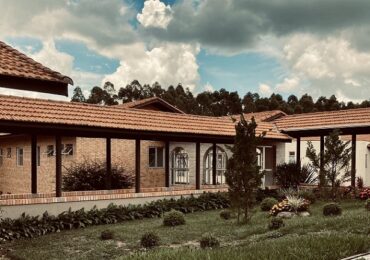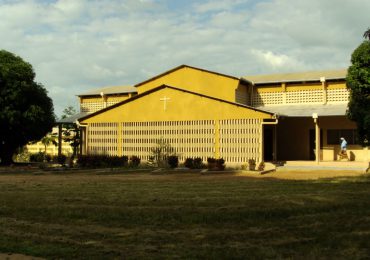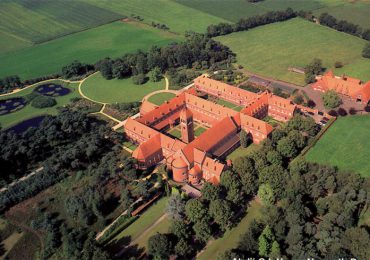Tamié
Dirección
Nombre Oficial Abbaye N.-D. de Tamié
N° 12
País France
Ciudad Plancherine
Código Postal F-73200
Contacto
Teléfono [33] (4) 79 31 15 50
Fax [33] (4) 79 37 05 24
Email Comunidad [email protected]
Sitio web www.abbaye-tamie.com
Superiore/a Dom Marco Bassignana, abbé 2023
Otras Informaciones
Estatuto Jurídico Abbey
Diócesis Dioecesis Camberiensis (Chambéry)
Región OCSO REI
(Re)fundado 1830
Orígenes
Founded in 1133 by monks of Bonnevaux. The community integrated into the Order in 1830 and transferred to Tamié in 1909-1911.
Historia
Tamié was founded in 1133 by monks from the abbey of Bonnevaux, 7th daughter house of Cîteaux which was founded in 1117 in the diocese of Vienne, currently Grenoble. Its first abbot was Peter (1102-1174) who became archbishop of Tarentaise in 1141 and was the second monk of our Order to be officially canonized in 1191. The abbey has never made any foundations.
The few archives that remain give us little information about how the community was able to survive during half a millennium of very troubled times. Its dimensions were modest and the buildings were constructed for 25 monks.
In the beginning of the 17th century Dom François-Nicolas de Riddes (1595-1645), named abbot of the community by the Duke of Savoy, tried in vain to reform his community. His successor, Dom Jean-Antoine de la Forêt de Somont, another appointed abbot, (1665-1701), succeeded in convincing several members of his community to embrace the reform of La Trappe, established by the abbot de Rancé. This was put into effect by the construction of the present buildings that replaced the decaying originals. The regular life continued up to the French Revolution which invaded Savoy on September 22, 1793.
With the revolutionary laws adopted in Savoy in December 1793, the community had no other choice than to disperse. However, it was the only community that wanted to remain united and it was exiled to Piedmont, first at Turin, then near Asti, until the invasion of Piedmont by the troops of Napoleon in 1798.
In 1802, at the request of Napoleon, Dom Gabet, former abbot of Tamié, and several monks, accepted to take charge of the hospice of Mont-Cenis, 2000 meters high between France and Italy, in order to assist passing travelers and soldiers. They agreed to do this on the condition that it be recognized as an abbey of diocesan right. It was the only one in the Empire. It is at this time that the community founded by St. Peter of Tarentaise disappeared juridically.
The property of Tamié was taken over by the government and divided up but no use was found for the buildings. After several attempts (diocesan missionaries, Brothers of the Holy Family of Belley) a group of monks from the abbey of Grâce-Dieu in Franche-Comté repopulated the monastery in October of 1861. This new autonomous community suffered many difficulties and the General Chapter of 1905 suppressed it, allowing several monks of Grâce-Dieu to remain there.
Fr. Eugene Huvelin, monk, and two lay brothers: Sabas Coquart and Hyppolyte Minet, all three seniors from Sept-Fons, 75, 74 and 54 years old, repurchased the buildings of the former abbey of Bellevaux between Besançon and Vesoul in 1817 and began living the monastic life there again. Recognized by the Archbishop of Besançon in 1818, they asked to be integrated into the Order of Cîteaux on July 7 1830, under the paternity of the abbey of Gard which moved to Sept-Fons in 1845.
The monks, frightened by the Revolution of July 27,28,29, 1830, took refuge in Switzerland where they remained for a year in the vicinity of Fribourg and three years at Géronde, before they could return to France. When they did they lived on a farm, Val-Sainte-Marie, south of Besançon, and then in the former abbey of Grâce-Dieu in 1849.
In a hostile political context and constrained by economic difficulties, the community sold its property in 1909 in order to move to Savoy and definitively to Tamié when a papal brief transferred the abbatial title of Grâce-Dieu there in 1911.
Dom Alexis Presse, superior ad nutum at Tamié in 1923 and elected abbot in 1925, helped the community to grow on the human, material and spiritual levels but his option to return to a Cistercian life more in conformity to its primitive observance, obliged him to separate from the Order and found a community according to his principles at Boquen, in Brittany, in a former abbey.
The Second Vatican Council was the occasion for a time of renewal in the community in Savoy under the direction of Dom François de Sales, abbot from 1960 to 1981, who undertook this renewal with serenity and daring. It was the result of work that integrated a strong collaboration between different persons that had a positive influence over the years and extended far beyond the walls of the abbey.
The reception of retreatants became more and more important. To preserve silence for the community and a reserved space for the guests, construction work was begun in 1988. The church was renovated in several stages to accommodate the various needs as they evolved and all the places reserved for the community were also gradually renovated.
Padre Inmediato
Sept-Fons
Casas hijas
Mont des Cats (since 1973); Boschi (since 1993)
Neiges (2005-2022)
Antiguos(as) Superiores(as)
The monastery of Tamié housed three successive communities:
– One founded by St. Peter of Tarentaise in 1133 that survived until the death of the last monk around 1825;
– One founded at Tamié by Grâce-Dieu in 1861, autonomous until 1905;
– A diocesan communitiy founded at Bellevaux in 1818, integrated into the Order of Cîteaux in 1830, transferred to Geronde, then to Val-Sainte-Marie in 1834, established as an abbey at Grâce-Dieu in 1848 and transferred to Tamié in 1911.
Abbots and Superiors
I – Abbots of Tamié I (1133-1802)
Saint Pierre de Tarentaise, abbot 1132-1141, archbishop 1141-1174, canonised en 1191
Bernard
Robert
Pierre II, 1150-1151
Guy de Beaufort, 1156-1163
Pierre d’Avallon (Ascherius), 1163-1168
Guy de Cevins, 1168-1172
Pierre de St-Genis, 1172-1207
Girold de la Tour, 1207-1222
Humbert d’Avallon, 1222
Berlion de Pont-de-Beauvoisin, 1223-1234
Guillaume de Boges, 1234
Pierre de Seythenay, 1237-1242
Berlion de Bellecombe, 1242-1245
Guy ou Guigues, 1246-1250
Jean, 1251
Jacques d’Ameysin, 1253-1262.
Anthelme de Faverges, 1263-1276.
Anselme d’Allevard, 1277-1304.
Hugues de Pallud, 1305-1322.
Jacques Pascal d’Yenne, 1322-1343.
Jacques de Ribot, 1343-1348.
Raoul de Seythenay, 1348-1358.
Gérard de Beaufort, 1358-1380.
Guillaume Guinand de Narbonne, 1381-1391, appointed by the antipope Clément VII.
Pierre Castin, 1391-1400, appointed by the antipope Clément VII, deposed by the Gneral Chapter.
Pierre de Barignie, 1400-1420, appointed by Pope Boniface IX.
Claude Paret, 1420-1454, regularly elected.
Georges Jocerand de Cons, 1454-1471, appointed by the Duke of Savoy.
Urbain de Chevron, 1472-1484, appointed commendatory abbot by the Duke of Savoy, non-monk.
Augustin de la Charnée, 1484-1492, appointed by the Duke;
In Rome, a competitor J. J. Sclafenatus, bishop of Parma, commendatory abbot of Tamié.
Urbain II de Chevron, 1492-1500.
Jacques François de Chevron, 1500-1506, commendatory, non-monk (he was 8 years of age in 1500).
Alain Lacerel, 1506-1527, regularly elected;
In Rome, a competitor : Fatius Santorius, Cardinal of Santa Sabina, commendatory.
Etienne Giquel, 1520-1537, appointed in 1520 as coadjutor of Dom Lacerel.
Pierre de Beaufort, 1537-1584, commendatory, but made profession.
Jean de Chevron, 1584-1595, commendatory, appointed by the Duke, but made profession.
François Nicolas de Riddes, 1595-1645, prior of Ste-Marie d’Aulps, appointed by the Duke. .
François Nicolas de la Forest de Somont, 1635-1659, coadjutor in 1635.
Jean Antoine DE LA FORES
Ginepro RIVA — Abbé – 17/11/2011- 15/11/2023
Trabajo y Fuentes de Ingresos
Cheese factory: around 1,100 metric tons of milk are collected from neighboring farms for a production of 150 metric tons of cheese. It is sold regionally and nationally. Other sources of income include a shop and the guesthouse.
Hospedaje
28 rooms in the guesthouse and in another building there are 36 spaces for young people in independent groups.
Transporte
Gare destinataire : Albertville, 15 km.





